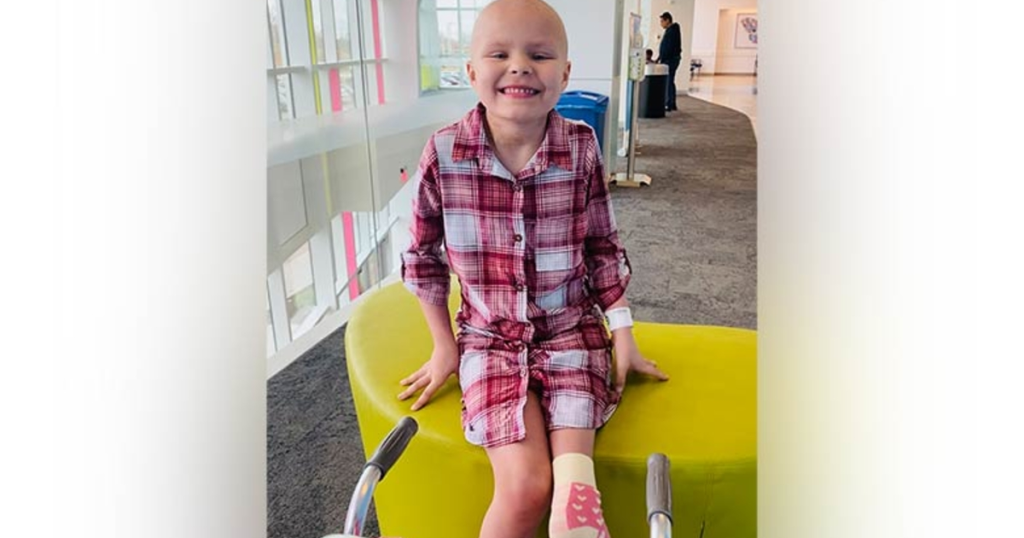
Ava was only two when her parents first noticed something was wrong.
At first, it was just a limp. A little girl tripping more often than usual. A bit of swelling in her tiny leg. They thought maybe she had just fallen. Children stumble all the time.
But then the swelling didn’t fade. The pain grew worse. And one day, Ava cried out in agony simply trying to stand.
Her parents rushed her to the hospital. Tests. X-rays. Scans. Long hours in cold waiting rooms, holding hands, whispering prayers.
The diagnosis came like a hammer.
Osteosarcoma. Bone cancer.
Her parents stared at the doctor, unable to breathe. “But… she’s only two.”
The doctor nodded solemnly. “It’s rare. But we caught it. And we can fight it.”
The treatment plan was brutal.
Chemo. Endless hospital stays. Ava’s tiny body hooked to IV lines, her hair thinning, her laughter silenced by nausea. Her mother sat by her bed night after night, singing lullabies while machines beeped. Her father held her hand and whispered: “You’re the bravest girl in the world.”
But when the tumor didn’t shrink enough, the family faced a choice.
Traditional surgery meant amputating her leg above the knee. A prosthesis could help her walk, but she’d always struggle to run, to dance.
There was another option. Something radical. Something almost unthinkable.
Rotationplasty.
The surgeon explained: “We remove the tumor and part of the leg. Then we rotate the lower leg and attach it backwards. The ankle becomes the knee. It looks unusual. But functionally—she will run, she will jump, she can even dance.”
Her parents sat in stunned silence. It sounded terrifying. Strange. But it also sounded like hope.
That night, lying in the hospital bed, Ava looked up at her mom.
“Will I still dance, Mommy?”
Her mother’s tears fell as she whispered back: “Yes, baby. You’ll dance again.”
The surgery was long. Hours passed as surgeons worked with painstaking care. Her parents paced the waiting room, clutching each other, barely breathing.
When they finally heard the words “She’s out of surgery. She’s stable,” relief washed over them like a tide.
But recovery was only beginning.
When Ava first saw her leg, her eyes widened. She touched it curiously, then looked at her parents. “It’s different,” she said softly.
Her mom stroked her cheek. “Different doesn’t mean less. Different means strong.”
Rehabilitation was hard.
Physical therapy brought tears, sweat, frustration. Learning to balance on a rotated leg. Learning to trust a body that had been rebuilt. Some days she cried, pushing away the prosthesis. Some days she refused to get out of bed.
But then came other days.
Days when she stood taller. When she walked a little farther. When she laughed again, her cheeks flushed with victory.
The first time she twirled in a tutu—awkwardly, slowly, but proudly—her parents broke down, crying harder than they had on diagnosis day.
“Look, Mommy,” Ava giggled. “I can still dance.”
Now, years later, Ava embraces her uniqueness.
Yes, her leg looks different. Yes, people sometimes stare. But Ava smiles and says, “This makes me special.”
She runs faster than anyone thought possible. She jumps. She spins. She dances.
She didn’t just survive cancer—she found a new way to live, a new way to move, a new way to shine.
Every step is a reminder that strength doesn’t always look ordinary. Sometimes, it looks a little different. Sometimes, it looks like courage.
And Ava carries that courage in every dance step she takes.